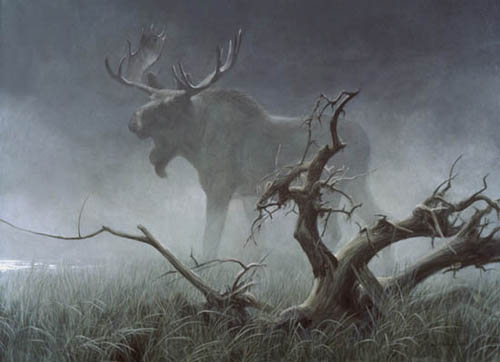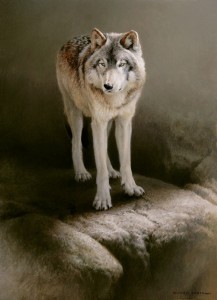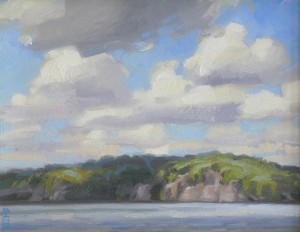Artists in Algonquin Park – Past and Present (Part Two)
By: Joel Irwin
The Present
The Algonquin School of Painters marked the beginning of a Canadian tradition in landscape art. Since Thomson’s tragic end in Canoe Lake, artists of all kinds have traveled from far and wide to discover the hidden beauties in Algonquin Park. But as times change, so do artists and their ideas, and the Algonquin forest no longer represents the mysterious and dangerous North country, but a place to be protected and understood. When the industrialism of the early 20th century provoked fears of alienation and a loss of humanity, artists responded by rediscovering the human through their art. In the present age, the rapid industrial and technological advances have come to pose new kinds of threats and, as a result, have inspired new kinds of artistic responses.
A New School of Algonquin Artists
In the early 1940’s, a young chore boy working at a Wildlife Research Camp fell in love with the landscapes and wildlife of Algonquin Park. The beauty of the Park helped inspire this youth to try his hand at art, and after many years of painting and study, this young man would become one of Canada’s most famous wildlife painters. His name is Robert Bateman, and since his early days in Algonquin, he has initiated a number of environmental programs to foster healthier relations between people and the natural world. His paintings have become an integral part of these programs, as he uses them to convey pointed environmental themes, which articulate how humans live against, rather than with, their environments.
“But the biggest impact of all was Algonquin Park” says Bateman, when describing his influences; “until my late teen years I had thought of “The Park” as being an almost mythical place … the great Canadian northland, the heart of Tom Thomson country.” The mythic stature of the Park would draw a number of young artists to its interior and help shape their artistic temperaments. Among them was Michael Dumas, a now renowned Canadian painter. His wildlife paintings express the beauty and grace in the Canadian forests, and inspire a refined connection with the natural world, where viewers can experience directly the magnificence of nature.
Dumas’ connections with Algonquin ran deeper than that of Bateman’s, since he was raised just outside the Park’s borders. His father and relatives worked in Algonquin as guides and helped erect some of its landmark buildings. Dumas himself worked as a Park Ranger for four seasons, where he earned enough money to put himself through art college.
Dumas explains that his years spent in Algonquin had influenced him as an artist quite deeply: “There seems to be something about Algonquin that gets to you as a person” he says, “some aura, or exertion of influence on a person that is difficult to define but very easy to feel…it’s bound to make for some common ground with every artist who is inspired to paint here.”
The “aura” that Dumas describes has become a significant element in artist Tony Bianco’s Algonquin paintings. Bianco has experimented with gold and silver leaf in his landscape oils and has achieved
a luminosity far beyond the capability of any palette. His works convey a rich, reflective quality, as they create a halo-like aura around his trees, reminiscent of the gold halos in medieval, religious iconography, or the eroticized auras of a Gustav Klimt painting. But Bianco’s works express something wholly new, as they instill in the viewer an almost spiritual reverence for the natural world.
These artists are few of the many whose works are part of a greater and developing movement in contemporary art. Like the modernist painters who challenged the alienation of humans from one another, these artists are challenging the alienation of humans from the natural world. They create through their works a refined sense of nature while challenging the perspective which sees it only as a resource to be exploited. Their works remind us that the natural world provides us with more than lumber and water and food — it provides us with beauty and inspiration, and will continue to bring artists to new heights and new achievements.
Algonquin Park has remained a cornerstone in the Canadian tradition of landscape and wildlife art, and with the establishment of the Algonquin Art Centre in the very heart of the Park, the future of artists in Algonquin will be as significant as its past.






